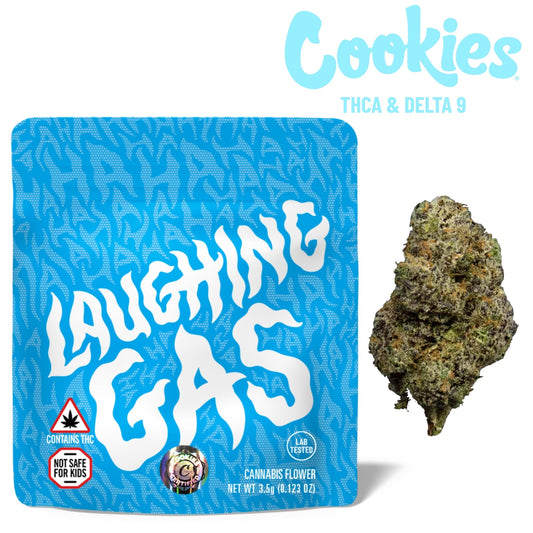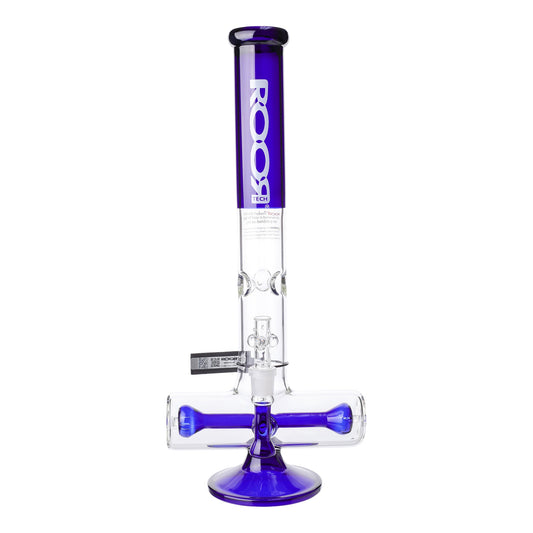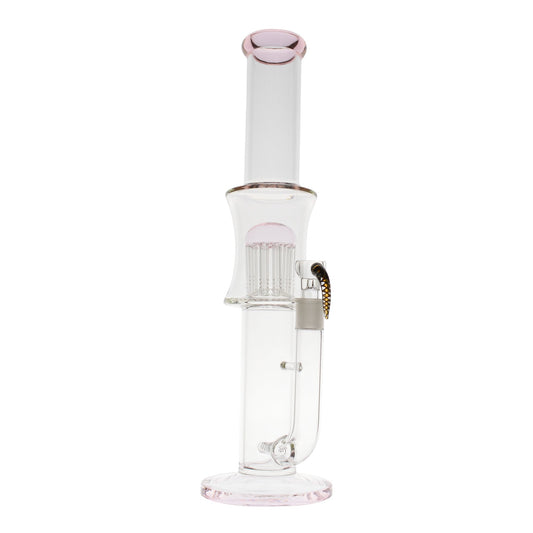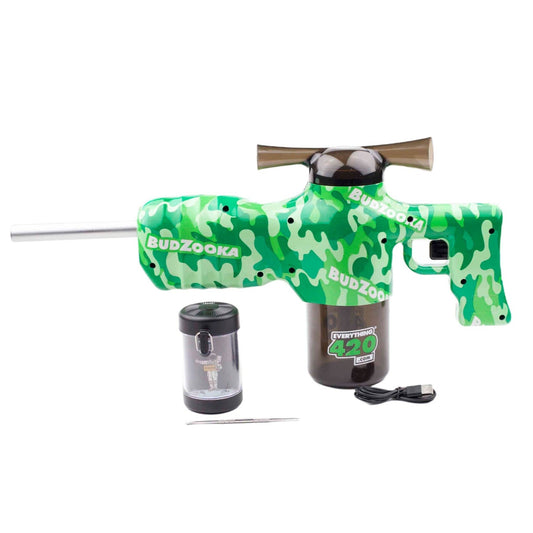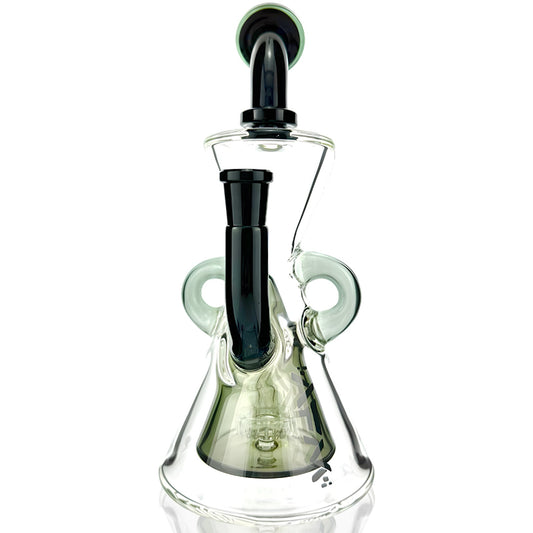The art of growing can be a make or break experience based on how much water each plant gets per day. In combination with light and sun, watering is an essential part of a successful growth cycle and should not be overlooked when trying to grow a plant. While it might seem straightforward when watering plants, any plant parent will know that depending on the plant and specifically the strain is what will help a plant grow into its best self. Beginner plant growers might have a million questions about watering but with a little guidance and hands-on trial and error experience, anyone can learn how to water plants.
Why do plants need water?

Just like humans and animals need food and water, plants need H20 as well just to perform at a basic and functional level. By watering, the plant is able to absorb the soil’s nutrients and grow successful yields over time. Similar to any living and breathing being, plants need food (nutrients from soil, plant food) and water to survive and thrive. Watering too much or too little can be detrimental to the health of a plant - so how do you know what is the right amount?
Does container size matter?
Plant roots are known to be pretty fragile so it is best to keep transplanting to a minimum. When first deciding on a pot for your plant to call home, make sure to get one that it can grow into so its roots do not feel crowded. Ensuring that your seedlings have enough space to grow its roots and eventually flowers will determine the success of the overall growing experience.
Three gallon pots are typically the most commonly used, as they are a fine balance of pot size and not having an overwhelming amount of space taken up by this pot size. Using three gallon pots will allow for multiple plants to grow in one room without sacrificing space for roots. Using bigger pots like five gallon pots can work as well, but they will take up more space so long as you are okay with that.
Regardless of container size, you will want to make sure that all pots have holes at the bottom to allow for proper drainage. When doing this and placing on top of small dishes, this allows for the excess water to be captured and avoids overwatering.
How much should you water plants?
There are different stages in every plant’s growth cycle, and knowing about each phase should give a better understanding of how much a plant should be watered. Depending on the stage a plant is in, this could call for minimal amounts of water every few days, to water a certain amount every single day and sometimes multiple times a day. When first starting a plant journey, here are the stages of a typical growth cycle.
Plant stages of growth

The above table is a guide to a general watering schedule that anyone can put into practice. Of course you might need to make adjustments based on the health of your plant, but generally it is best to follow this type of watering schedule in addition to the wet-to-dry soil method. Germination should take about a week and is only watered at the beginning, based on whatever germination method you decide to use. Seedlings can be watered once or twice a day, and not necessarily large amounts of water but just making sure the frequency of the plant receiving water to initiate growth can occur. During the vegetative phase, watering daily is typically best when using smaller pots, but for bigger pots it is most ideal to water plants every two days or so. The flowering stage will require watering plants every two to three days with the exception of flushing during the flowering stage.
How much to water indoor plants
A general rule of thumb when working with potted plants is to water about 25% of the plant’s pot volume which gives a nice ratio for the plant to absorb water and its proper nutrients. Since plants are almost 90% water, it is necessary to make sure each plant is properly hydrated for photosynthesis to grow healthy and dank yields later on. Indoor watering can get tricky because it is a whole different ball game as compared to growing outdoors. The grower is responsible for the watering schedule, lighting and temperature quality control when working with plants indoors and while this can be a cumbersome task as a beginner - it is doable and gets easier over time.
Indoor watering plants means you have full control of the environment which can work in your favor if handled correctly. Growing in a natural environment outside is excellent if you have a favorable environment for your plants to thrive in, but sheltering plants indoors can help to reduce any risk factors that you might face when growing outside.
With indoor growing, an ebb and flow type of watering schedule can work best. As in, a wet-to-dry cycle to determine when a plant has enough water or when it’s time to replenish its stash. Keep in mind that like any living organism, when it grows and gets bigger it will most likely consume its water supply a lot quicker than before so be aware of its growth spurts to keep up with it! A wet-to-dry cycle is the easiest way in determining if a plant has its necessary water levels or if it is in need of some extra H20 to flush out any built up bacteria or extra nutrients it doesn’t need.
How much to water outdoor plants

Outdoor plants have different factors every grower needs to consider. While it can be advantageous to grow outdoors in a natural environment that gives the plant everything it needs, there are a few things to watch out for like watering levels, insects and pests, and any other environmental factors that might affect a plant’s growth. A general rule of thumb for watering outdoors is to water about once a week depending on how much rain the plant gets at each stage of growth. Naturally, plants will absorb whatever it is exposed to in its environment. If you are in the hot desert heat and know that typical plant survival is low, it is best to evaluate the growing zone you intend to plant in and see if it is best to grow indoors or outdoors (if you are lucky enough to have a choice).
How to tell if a plant requires watering

Like all other plants, there are telling signs when it is time to get to watering plants at the times they need it the most. Whether you are an experienced grower or an outright beginner when starting your plant parent journey, here are a few signs that you should water your baby so it can grow at its best.
Underwatered plants
Plants that are dehydrated and in need of some serious H20 will look pretty lifeless and droopy, possibly displaying brown or yellow leaves that show they are on the verge of dying. Most plants that have this description will also have dry soil, which is the number one indication that watering plants should be done ASAP.
Positive signs when watering plants
If a plant is green and shows many signs of life through healthy and happy looking leaves, this means that it is being properly watered and can continue to thrive all the way through its harvest stage. But it is important to remember that watering plants is not a one size fits all process and requires different amounts of water throughout its various stages of growth. This means that while watering plants in the beginning with positive signs of good health, that doesn’t mean that it can’t show signs of needing more or less water later on.
What overwatering plants look like
There is in fact such a thing as overwatering plants, and this includes too much watering plants to the point it can drown and start to show signs of unhealthy or stunted growth. If a plant starts to droop or even starts to display yellow or brown leaves, evaluating the soil’s moisture levels will help to determine whether you are watering too much or too little. If the soil is wet with signs of decay on the leaves, scale back in watering the a bit and see the difference it can make after checking on it in a few days. On the other hand, if the plant soil is dry that is the most telling sign that it needs moisture and should be watered immediately.
Swollen leaves can also be the result of watering plants too much, and it might be a good idea to check the drainage of each swollen plant to make sure there is proper drainage and to avoid any blockages that can cause water to accumulate at the bottom of a plant pot.
Is there such a meaning of pH when watering plants?

If you are a water fanatic you will know and understand the importance of pH when it comes to consuming water. For those unaware, the pH levels in water are important because it determines water quality and acidity levels. PH levels measure the amount of free hydrogen and hydroxyl ions in water, with a system ranging from 0 to 14 - acidic level waters are zero to six, while base level waters are above an 8, 7 being the most natural and pure water around. Alkaline water levels are between 8 and 9, but there is some benefit in using more acidic water when it comes to watering plants. The reason for this is that most times the soil that plants grow in are actually slightly acidic and prefer a similar environment, unless grown hydroponically. Watering plants with a pH between six and seven is ideal because this is the most optimal environment where the plant can take in nutrients - anything lower than that will cause a deficiency and loss of life will start to occur.
It is important to be aware of the type of water you are giving your crops because it will make a difference in the end when it comes to evaluating harvest quality. If you are able to control the pH balances of your plant by watering with the proper H20, this will make mounds of a difference in avoiding any nutrient deficiencies later on and gives your plants the best environment possible to grow in. If you look at your plants as your babies this basically means making sure your plant child has the best water for it and not just what is available. Of course, most tap water from the hose is fine but if you can filter your water to get the right pH levels, your plants will start to show signs of positive growth simply due to the quality of the water it receives. Similar to if you started to only drink alkaline water and alkaline foods, your pH levels will start to balance out and would be able to see worlds of a difference in your day to day. Do not ever doubt that water can’t change your life and just know there are levels to this! It is best to research more about pH water levels and the water type (hard water, soft water) you are exposed to in your state as they differ by region.
How to get the finest water for plants?
For plants to successfully grow, the pH levels of plants should be between 6 - 6.8 pH levels when grown in soil. If you want to test the soil of the plant, you can see where your plant falls exactly and see if the pH levels should be adjusted. Again, the right pH levels will allow for more nutrients to be absorbed by the plant roots, and plants like their environment to be more on the acidic side.
Rainwater for watering plants
Of course Mother Nature knows best, so without a doubt the best water for plants is rainwater, which offers a natural pH level and mineral content that can be sourced for free. Obviously, this could pose a difficult task if you live in the city and not exposed to fresh rainwater very much, or live in the desert and that is just not happening. There are ways to purify normal water and that will involve using pH strips to test the pH levels in not just the soil of a plant but the water source as well.
To test the true pH levels of the plant, you must test a pH strip of runoff water that comes from the watered soil, as this gives the best idea of what the root pH levels are. Making sure all the right nutrients are present is more important than adjusting pH levels at first, so making sure that the correct amount of nutrients are in the soil before analyzing water pH levels is the best strategy. While there are devices and equipment that help in adjusting pH level, using household items like limes to increase pH levels and vinegar to lower pH levels is an easy way to get better pH control without having to break the bank.
Bottled water for watering plants
There are actually different pH levels when it comes to comparing popular bottled water brands, so if you are looking to take this route it is best to look up pH level of the specific water brand as it differs from one to the next. Alkaline bottled water will have a pH level of 8 or 9, and other brands like Dasani and Aquafina have pH levels of 4.5 to 5. So based on the pH level you are looking to achieve with your plant is the type of bottled water that should be used. For this purpose, Dasani and Aquafina would be more beneficial for plants with a more acidic pH level, whereas more natural waters can be too high in pH level for an ideal growth environment.
How to water plants when you’re away?

While it might not be ideal, it is understandable if you need to live your best life and go on vacation in the middle of growing plants. If you don’t have a roommate or bestie nearby to look after your plant babies, there are a few methods to make sure they are properly watered while you are away. There are auto-watering systems that you can buy for the best peace of mind in having full control of the amount of water dispensed along with maintaining water quality.
Bottled water drip system method
Even if it feels a little janky at first, this method is tried and true by stoners around the globe when the time called for a DIY auto-watering system. All you need is a plastic bottle and a sharp needle to poke holes into the bottle cap. Poking holes in the bottle cap is where the magic will occur once you initiate water to dispense out. Fill up the water bottle with your filtered water of choice, tighten with the cap that you poked holes in, flip it and bury it into the soil near the plant. Avoid placing directly next to the stem as this might interfere with plant growth, and make sure it is secured into the soil without going too deep. A normal sized bottle of water should drip for about three to seven days and ensure that the plant is not being overwatered.
Drainage plates for watering plants
A drainage plate is a plate with holes that sit at the bottom of the pot and designed to catch water from the drainage holes at the bottom of the plant pot. Drainage plates are extremely convenient because not only does it help with avoiding overwatering and possibly drowning out a plant, but it also helps to avoid a mess and handles excess runoff so you don’t have to. Use this extra water to test pH levels as well to determine the pH levels of the root, or simply repurpose for the grass outside. Drainage plates are an easy way for plants to tell us how much water they actually need by soaking up the water it needs and disposing of the rest through the drainage plates.
Beginner tips on how to water plants

Besides knowing about the essential aspects that make for a successful growth cycle, there are a few tips and tricks that can help your crops grow even bigger into the best quality buds a home grower can hope for. Even though there is a general overview to how often you should be watering plants, the most efficient way to make sure your plants are getting enough water is to pay attention to them. Going by the book is not a black and white experience, and there will always be hiccups or situations that arise out of nowhere that will require more research with a bit of trial and error. Here are a few tips that might help with watering plants to get it to the point you need it to!
Know what pots to use
The pot size and materials are important to note when planning out a grow space with supplies. There are smart pots for purchase that specialize in drainage and temperature control, but regular pots are just fine as long as you have the right pot size. Types of pot materials to consider using are: plastic containers, ceramic pots and fabric containers. Terracotta pots (ceramic containers) are as popular as plastic pots are when it comes to growing, but ceramic pots are not especially known for drainage and will cause issues. Plastic pots can be flimsy but are cost efficient and get the job done. Fabric containers are flimsy but hold plants pretty well and rate excellently in the drainage and airflow categories.
Considering growing mediums is important because it will set the scene for the entire growing experience. Similar to feeling comfortable in your home, you will want to choose a pot for your plant to feel at home in and that means having enough room to kick back and spread its roots to feel like it belongs in the space. Whether you grow directly in the ground’s soil, in a pot, or even hydroponics - consider all elements and equipment needed for your plant to successfully grow in its environment.
Catching water runoff
You do not need a fancy system to ensure your watering plants is on point, because drainage plates can do a fabulous job without dishing out all of your coins. Drainage plates are placed underneath the plant pot that has holes in it, and any excess water that is not absorbed by the roots will run off into the drainage plates. Without drainage plates, runoff water would simply spill all over the floor and who wants to clean up that mess? Drainage holes are extremely important to ensure plant health, and without drainage holes in a plant pot you will run the risk of overwatering and root rot which can lead to decay.
Flush plants
Usually, flushing will happen about two weeks prior to harvest time and is technically done in the last two weeks of the flowering stage. While it is not required to flush plants, it is best to do so as old nutrients are not a good thing for the plant and unnecessary for excess nutrients to stick around. When a plant enters the flowering stage, it has pretty much absorbed all of the nutrients in the soil after all those long weeks in the vegetative phase and flushing can be looked at as a detox for your plant. You might be getting flashbacks to when you drank too much water trying to detox for your last drug test, huh? Similarly, a plant needs to flush its system to rid itself of the extra stuff in its environment which in this case are the leftover nutrients that it does not need to absorb any longer.
To flush properly, make sure the water pH level is at the range you need (between 6 - 6.8 pH level). Do not add nutrients or plant food and only water the same amount you normally would when first starting out. After about 15 minutes, water the plants again the way you normally would and make sure to catch the runoff to test its pH levels. Testing the pH levels of this runoff water can be compared to the first pH level results to see how pure the runoff water is.
After flushing, plants might look lighter in color but this is normal and you should continue on to the harvesting stage. Be aware of too much discoloration right after this process, and take note that if there are any yellow leaves that show up it is best to harvest those buds as this is a sign of maturity.
Flushing is important because it facilitates and encourages the plant to enter a new stage of growth, prompting buds to become ready for harvest. Flushing will take out the old nutrients and tell the plant that it has literally turned a new leaf and it is time to harvest those yields!
Watering plants final thoughts
Besides light and temperature, watering plants is what ultimately determines a successful growth cycle. Knowing the best environment for plants, knowing how to properly water, and how to use water to your advantage when trying to flush out old and unused nutrients. Watering plants properly will go a long way in securing the best life for your plants, so do not sleep on this and give your plant babies what they need to vibe and thrive.
Have any questions about how we do things around here? Head on over to our EF420 FAQs that will answer everything you want to know or contact us for other questions you might have. The EF420 story is one we love to share as it was inspired by all of us who share the love of some good bud! We have the EF420 Rips Sweepstakes going on to win yourself some high quality prizes, so make sure you’re in the know to give yourself a shot at one of our epic giveaways.


















